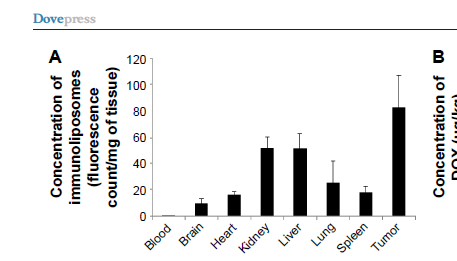Introduction
Cancer is a severe condition that causes multiple complications and leads to death if untreated. According to WHO (n.d), 9.6 people have died from different types of cancers in 2018 globally, and for the United States economic burden from cancer is estimated at $1.16 trillion. The topic discussed in the paper is important because breast cancer is a disease affecting many women and the treatment procedures cause harm to the person’s immune system and overall health.
In the research article by Tang et al. (2017), there are several scientific terms that the authors use to describe their experiment. Bevacizumab is the type of medication commonly used to treat cancer. Similarly, Doxorubicin is a drug that is applied during chemotherapy. Liposomes are vesicles in the shape of spheres that have the capability of encapsulating pharmacological agents such as hydrophilic or lipophili (Tang et al., 2017). This element of liposomes’ mechanism of work makes them useful for drug delivery within living organisms. Immunoliposome is similar to liposomes, but the latter is designed to combine the properties of antibodies and medication to enhance the process of drug delivery. When testing for breast cancer, scientists and practitioners aim to identify if a person’s body has HER2 protein, which is a marker that promotes the growth of cancer cells. The process of formation for the new blood vessels from existing ones is referred to as angiogenesis. VEG-F is a Vascular endothelial growth factor, which is a protein that may be used as an indication of cancer but also affects the formation of blood vessels. Finally, P-glycoprotein (P-gp) is used to transport medication within a person’s system.
Methods
The first stage of this experiment was set up in vitro, which means that all manipulations the scientists performed were done outside of a living organism in a laboratory. The cell culture model allows manipulating the cells from different tissues in a laboratory. Hence, no human subjects were involved in the study, which means that further research will be needed to confirm the results, while this study offers some preliminary conclusions about the new process of drug delivery. Addiitoanlly, an enzyme-linked immunosorbent assay (ELISA) was used to determine the concentration of bevacizumab.
Next, the authors used an in vivo mouse tumor model to further support their findings. Xenograft from a mouse, a part of the tissue that had a tumor, was used to test the efficiency of liposome and immunoliposome drug delivery. Unlike in vitro studies, this approach is closer to real-life studies and allows to examine the effect of the intervention of the organ or tissue and not individual cells. The fluorescent label approach was used to assess the results since adding these tags to the molecules allows to determine their location and count through imagining during the experiment.
Hence, over the course of this experiment, the researchers first used cell cultures and immunoliposomes with chemotherapy drugs to determine if the latter medication transportation method is valid. Next, they used a tumor derived from mice’s tissues and tested the same drug delivery method to determine whether the size of the tumor was affected. Imagining techniques were applied to count the immunoliposomes that were paired with a fluorescent agent.
Results
Figure 1 shows the outcomes of this experiment and the concentration of liposomes in different tissues. There are two axes in this figure, A represents the concentration of immunoliposomes and B—concentration of the chemotherapy drug the researchers administered. The concentration data ranges on a scale from 0 to 120. The liposomes in this experiment had fluorescent agents, which the researchers used to count the amount upon administering the intervention.

Discussion and Conclusions
The graph in Figure 1 shows the concentration of fluorescent agents * This graph shows that there is a potential for using immunoliposomes for breast cancer treatments that will not harm the patient. Traditional treatments cannot distinguish between healthy cells and tumor cells. As a result, patients often have significant complications after chemotherapy. With the method that Tang et al. (2017) used, the blood of the experiment subject had no traces of the pharmacological agent. In contrast, the tumor cells had the highest concentration of 80. Ther tissues were mildly affected, with liver and kidneys having traces of the medication that rank at 60 each (Tang et al., 2017). Hence, one can conclude that the method helps deliver medicine directly to the tumor and has less harmful effects on healthy organs.
Further studies are needed, including randomized controlled trials to confirm the efficiency of this method for humans. Still, this research study helps advance the cancer treatment methods and help find better cures for this disease. In summary, this paper reviews an article by Tang et al. (2017). This is a publication that outlines the findings and the procedures the authors used to test a new method for delivering chemotherapy medication. The results show that the use of immunoliposome and the methods the authors applied helps reduce the harmful side effects.
References
Tang, Y., Soroush, F., Tong, Z., Kiani, M., & Wang, B. (2017). Targeted multidrug delivery system to overcome chemoresistance in breast cancer. Dovepress Journal: International. Journal of Nanomedicine, 12, 671-681
WHO. (n.d.). Cancer. WHO. Web.